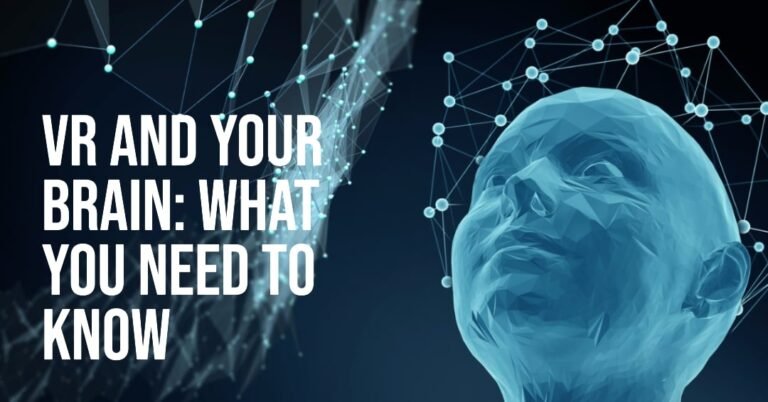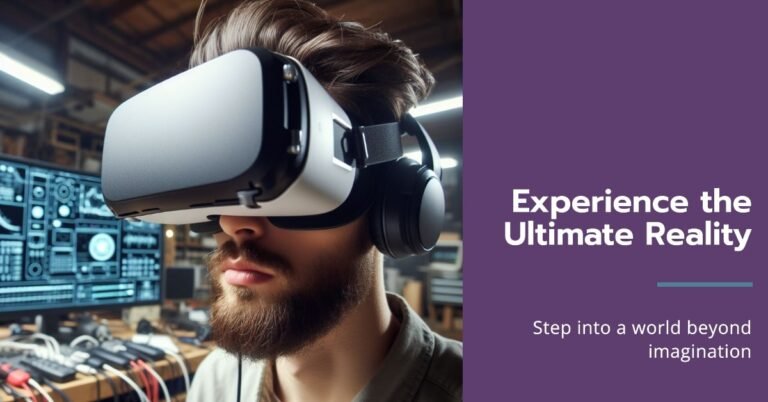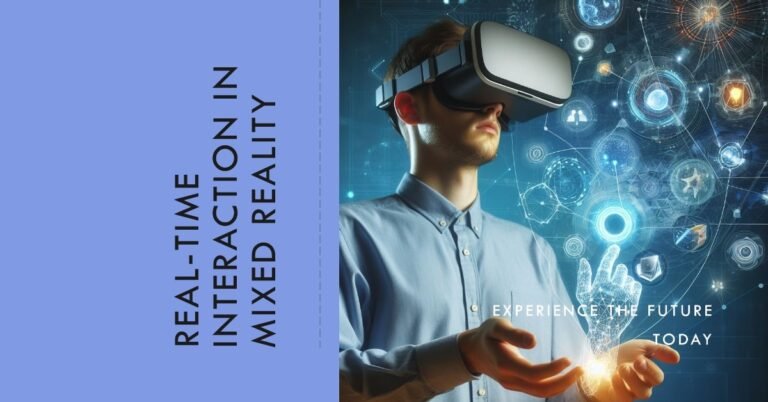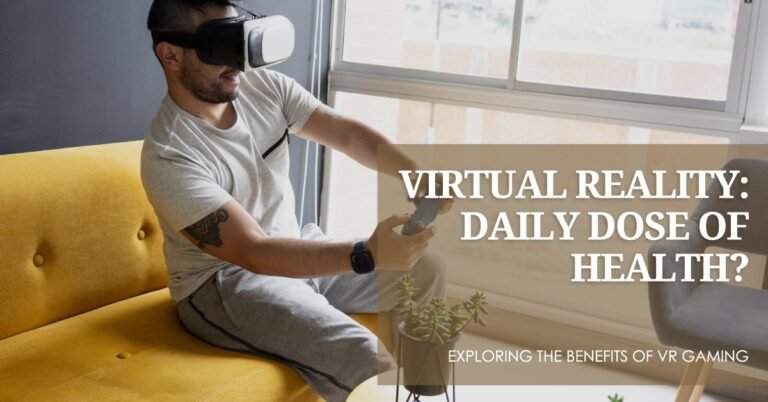MR and VR (Mixed Reality vs. Virtual Reality): Separating Fact From Fiction!
Have you ever wondered what it would be like to explore a virtual world while still interacting with your physical surroundings? Or perhaps, you’ve dreamt of learning a new skill by having a virtual instructor guide you through the process, all within the comfort of your living room? Well, wonder no more! This is the exciting realm of mixed reality (MR) and virtual reality (VR), two technologies that are rapidly blurring the lines between the physical and digital worlds.
But wait! Before you jump into the metaverse headfirst, it’s crucial to understand the key differences between MR and VR. In a nutshell, VR completely immerses you in a computer-generated environment, while MR overlays digital elements onto the real world. Confused? Don’t worry, this blog post from ARVRRealm.com will be your guide! We’ll debunk myths, explore real-world applications, and equip you with the knowledge to navigate this exciting technological frontier.
Understanding the Tech Behind MR and VR
Virtual Reality (VR): Stepping into a Fictional Reality
Imagine putting on a headset and being transported to the summit of Mount Everest, feeling the biting wind on your face and the ground beneath your feet. That’s the power of VR! VR headsets create a fully immersive experience by blocking out your physical surroundings and replacing them with a computer-generated environment. This environment can be anything you can imagine: a fantastical alien world, a historical battlefield, or even the inside of the human body. High-resolution displays, motion sensors, and sometimes even haptic feedback (think vibrations and textures) work together to trick your brain into believing the virtual world is real.
Mixed Reality (MR): Bridging the Physical and Digital Divide
Now, let’s say you’re putting together a bookshelf and need a little help. With MR, you can wear a headset or special glasses that overlay digital information onto your real-world environment. So, in this case, you might see step-by-step instructions projected onto the partially assembled bookshelf, guiding you through the process. MR allows you to seamlessly interact with both the physical and digital worlds simultaneously.
Here’s a table summarizing the key differences between VR and MR:
| Feature | Virtual Reality (VR) | Mixed Reality (MR) |
| Environment | Completely computer-generated | Overlays digital elements onto the real world |
| Interaction | Limited to the virtual world | Allows interaction with both physical and digital elements |
| Applications | Gaming, entertainment, education, training simulations | Design, manufacturing, education, maintenance, remote collaboration |
Busting the Myths: Separating Fact from Fiction in MR and VR
There’s a lot of buzz surrounding VR and MR, and with that buzz comes a fair share of misinformation. Let’s clear up some common myths:
- Myth #1: VR and MR are just for gaming. Busted! While gaming is a popular application for VR, both VR and MR have a wide range of potential uses. VR is being used for training simulations in fields like medicine and aviation, while MR is revolutionizing design and manufacturing processes.
- Myth #2: VR and MR will make us disconnect from reality. Busted! Used responsibly, VR and MR can actually enhance our connection with the world. For example, VR can be used to virtually travel to historical locations, fostering a deeper understanding of different cultures.
- Myth #3: VR and MR are just a fad. Busted! These technologies are constantly evolving, with new advancements happening all the time. As the technology becomes more affordable and accessible, we can expect VR and MR to play an increasingly important role in our lives.
The Potential: Real-World Applications of VR and MR
Here are some exciting ways VR and MR are already transforming various industries:
Education and Training:
Imagine attending a virtual lecture on the human anatomy where you can explore a 3D model of the heart in real-time. Or, picture practicing a complex medical procedure in a safe, virtual environment. VR and MR are making education and training more immersive, interactive, and engaging. Students can virtually dissect a frog in biology class, or pilots can train for emergency landings in a VR simulator. This not only enhances learning but also reduces costs associated with traditional training methods.
Design and Manufacturing:
Architects can use VR to walk through a virtual building before it’s even constructed, identifying potential design flaws and making adjustments on the fly. Engineers can use MR to visualize how a new product will fit into an existing assembly line, ensuring everything works seamlessly before production begins. These technologies are streamlining design and manufacturing processes, leading to increased efficiency and innovation. Imagine a car designer using MR to virtually sculpt the curves of a new car model, all while seeing it superimposed onto a real-world clay mock-up in the studio. This allows for real-time feedback and iteration, saving countless hours and resources compared to traditional design methods.
Healthcare:
VR is being used to treat phobias and anxiety disorders by exposing patients to their fears in a safe, controlled environment. Imagine someone with a fear of heights gradually scaling a virtual mountain, all within the comfort of a therapist’s office. VR can also be used for pain management, providing patients with a distraction from unpleasant procedures. MR, on the other hand, is being used to assist surgeons during complex procedures by providing them with real-time data and visualizations. Imagine a surgeon performing a delicate brain operation while wearing MR glasses that overlay vital anatomical information directly onto the patient’s head. This allows for greater precision and accuracy, leading to improved patient outcomes.
Maintenance and Repair:
Imagine a technician troubleshooting a complex piece of machinery. With MR, they can see digital instructions and repair manuals overlaid onto the equipment itself, highlighting the exact steps needed to fix the problem. This can significantly reduce downtime and improve repair efficiency, especially for complex machinery that requires specialized knowledge.
Remote Collaboration:
In today’s globalized world, teams often need to collaborate on projects even when they’re located in different parts of the world. VR and MR can bridge this gap by creating immersive virtual workspaces where team members can interact with each other and with digital models or data sets. Imagine an architect in New York and an engineer in London working together on a construction project in real-time, both virtually present in the same 3D model of the building. This fosters better communication and collaboration, leading to more efficient project completion.
The Future of Mixed and Virtual Reality: A World of Possibilities
The future of MR and VR is brimming with possibilities. As these technologies continue to evolve, we can expect them to become even more affordable, accessible, and sophisticated. Here are some potential future applications:
- Virtual Travel: Imagine exploring the Great Barrier Reef or scaling the Eiffel Tower, all from the comfort of your living room. VR could revolutionize travel, allowing people to experience different cultures and destinations without the need for expensive plane tickets or physical limitations.
- Enhanced Learning: VR and MR could transform education into a truly immersive and interactive experience. Students could virtually travel back in time to witness historical events or explore the inner workings of the human body in 3D. This would make learning more engaging and effective for students of all ages.
- Smarter Homes and Workplaces: Imagine a world where your home environment can be transformed with MR. Perhaps you want to virtually redecorate your living room or see how a new piece of furniture would look in your space before you buy it. MR could also be integrated into workplaces, providing employees with on-the-job training and real-time information overlays to improve efficiency and safety.
- The Metaverse: The concept of the Metaverse, a persistent virtual world where people can work, socialize, and play, is becoming increasingly popular. VR and MR could play a key role in the development of the metaverse, blurring the lines between the physical and digital worlds even further.
Taking the First Step: How to Get Involved in MR and VR
If you’re curious about exploring MR and VR for yourself, there are several ways to get started:
- VR Arcades: Many cities now have VR arcades where you can try out a variety of VR experiences, from games to simulations.
- Standalone VR Headsets: Standalone VR headsets, such as the Oculus Quest, offer a more affordable and accessible entry point into the VR world.
- MR Headsets: MR headsets are still in their early stages of development, but there are a few options available on the market, such as the Microsoft HoloLens.
- VR Apps and Games: There’s a growing library of VR apps and games available for download, offering a wide range of experiences for all interests.
Remember, VR and MR are still evolving technologies, and the best applications may not have been invented yet. The possibilities are truly endless! So, why not dive in and explore this exciting new frontier for yourself?
Important Considerations for MR and VR
While the potential applications of MR and VR are vast and exciting, it’s important to consider some key factors before jumping headfirst into this new world.
- Cost: High-end VR headsets and MR devices can still be quite expensive, putting them out of reach for some users. As the technology matures, we can expect prices to come down, but for now, it’s an investment to consider.
- Content Availability: The content ecosystem for VR and MR is still in its early stages. While there are a growing number of VR games and experiences available, finding high-quality MR content can be more challenging. This may limit the usefulness of MR devices for some users.
- Safety and Health Concerns: Spending extended periods in VR can lead to nausea, dizziness, and eye strain. It’s important to take breaks frequently and listen to your body when using VR. Additionally, VR can cause motion sickness in some users, so it’s important to be aware of this potential side effect.
- Privacy Issues: As VR and MR become more integrated into our lives, there are growing privacy concerns. With these technologies, users will be generating a lot of data, including their movements, preferences, and even emotional responses. It’s crucial to choose reputable companies that have strong data privacy practices in place.
Finding the Right Fit: Choosing Between VR and MR
Ultimately, the choice between VR and MR depends on your specific needs and interests. Here’s a quick breakdown to help you decide:
Choose VR if:
- You’re looking for a fully immersive entertainment experience.
- You want to play VR games.
- You’re interested in virtual travel or exploring fantastical worlds.
Choose MR if:
- You need to interact with both the physical and digital worlds simultaneously.
- You’re interested in applications for design, manufacturing, or maintenance.
- You want to see digital information overlaid onto the real world.
Consider a combination of VR and MR:
As the technologies continue to develop, we may see devices that offer both VR and MR functionalities. This would give users the best of both worlds, allowing them to switch between fully immersive experiences and blended reality environments.
Conclusion: Stepping into the Future with Mixed and Virtual Reality
Mixed reality and virtual reality are rapidly transforming the way we interact with the world around us. From revolutionizing education and training to enhancing healthcare and design processes, the potential applications of these technologies are vast. While there are still challenges to overcome, such as cost, content availability, and privacy concerns, the future of MR and VR is incredibly bright. So, as these technologies continue to evolve, get ready to step into a world where the boundaries between the physical and digital are blurred, and the possibilities are truly limitless.
Here at ARVRRealm.com, we’re passionate about keeping you up-to-date on the latest advancements in MR and VR. We encourage you to explore this exciting new frontier and discover how these technologies can enhance your life!







2 Comments